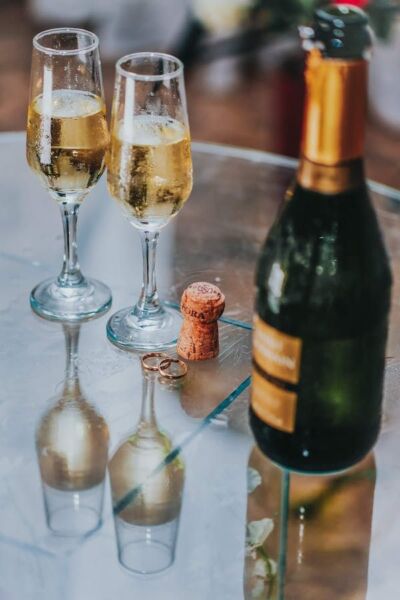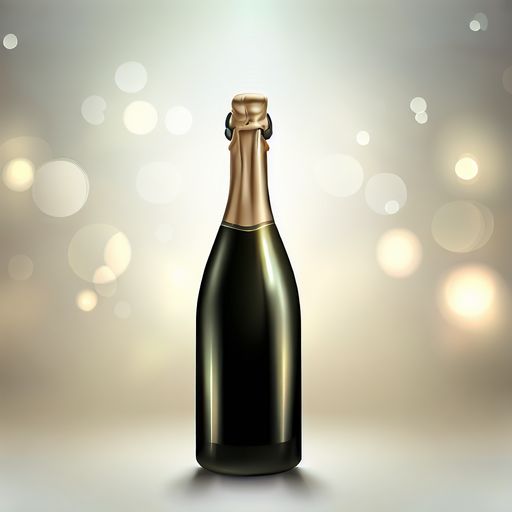Does Champagne Go Bad? How Long Does It Last?
We’ve all been there – you open a nice bottle of champagne to celebrate a special occasion, and don’t end up finishing it. Before you know it, the bottle has been sitting open on your kitchen counter for a week. Now you’re wondering, does champagne go bad?
The short answer is yes, champagne can go bad. Like any wine, champagne is perishable and has a limited shelf life. However, there are a variety of factors that affect how long it stays fresh and when it will start to taste “off.”
Reasons for Champagne Going Bad
The primary reason champagne goes bad is oxidation. When wine is exposed to oxygen, chemical reactions occur that start breaking down the wine’s molecules. This breakdown process results in off-flavors, aromas, and a lack of freshness.
Oxidation speeds up significantly when champagne is subjected to heat or light. This accelerates the chemical breakdown and shortens the wine’s shelf life. Proper storage is key to slowing oxidation and extending champagne’s lifespan.
Factors Affecting Champagne Spoilage

There are several key factors that determine whether champagne will go bad quickly or maintain its freshness and effervescence:
Cork Integrity
In an unopened bottle, the cork is the first line of defense against oxidation. If the cork allows too much air to penetrate the bottle, the champagne can oxidize and spoil over time. Signs of a compromised cork include dryness, cracks, brittleness, and discoloration.
Heat and Light Exposure
Heat and light cause champagne to oxidize more swiftly. Direct sunlight and warm environments above 70°F accelerate chemical reactions and speed up spoilage. Storing champagne in cool, dark places slows down these reactions.
Open vs. Unopened Bottles
Once opened, champagne is exposed to oxygen and thus oxidizes much more quickly. An opened bottle generally needs to be consumed within 1-2 days. An unopened bottle stored properly can maintain quality for 1-3 years.
Shelf Life of Champagne
The shelf life of champagne depends on several factors:
Type of Champagne
Vintage champagne is produced from grapes harvested in one single year, and aged for at least 3 years before release. These can age longer due to the maturation process, sometimes 10+ years. Non-vintage champagne blends grapes from multiple years, resulting in consistent flavor but shorter lifespan of only 2-3 years.
Storage Conditions
Temperature, light exposure, humidity, and upright bottle positioning all affect shelf life. Optimal storage is in cool (45-50°F), dark places with steady humidity around 60-75%.
Open vs. Closed Bottles
Unopened bottles stored properly can potentially last up to 3 years before deteriorating. However, once opened, champagne should be consumed ideally within 1-2 days for best taste and effervescence.
Special Cases
Some premium vintage champagnes like Dom Pérignon are produced to age gracefully for 10-15+ years. And the oldest champagne ever tasted was a Veuve Clicquot from 1820!
Signs of Spoiled Champagne
Here are the most common signs that your opened or unopened bottle of champagne may have gone bad:
Smell
A sour, vinegary, or cardboard-like smell means the champagne is past its prime. Good champagne should smell fresh and fruity.
Bubbles
Flat, lifeless bubbles are a red flag. Quality champagne has energetic, tiny bubbles that form a nice foam at the top.
Taste
Sourness, vinegar notes, or general flat/off flavors indicate spoilage. Taste should be crisp and vibrant.
Cork
If the cork is dried out, cracked, soft, or discolored, air may have seeped in and caused oxidation. Healthy corks are resilient and have good seal with the bottle.
Color
Cloudiness or a yellow/brown tinge means the champagne has likely oxidized. Properly aged champagne is transparent with hints of gold.
Consequences of Drinking Spoiled Champagne

Drinking spoiled champagne poses a few risks:
Unpleasant Symptoms
You may experience stomach discomfort, nausea, vomiting, headaches or dizziness. These side effects result from toxins like acetaldehyde formed during oxidation.
Severe Reactions
In rare cases, severe allergic reactions or even food poisoning are possible from dangerous bacteria growth. Exercise caution when drinking old champagne.
If in doubt, remember – it’s better to be safe than sorry!
Proper Champagne Storage
Follow these tips for storing champagne correctly:
Store Bottles Upright
This prevents the corks from drying out through contact with the air inside the bottle. Storing sideways accelerates cork degradation.
Cool and Dark Storage
Ideally, champagne should be stored in a cool cellar or wine fridge between 45-50°F. Keep away from direct light sources like the sun or household lights to prevent premature oxidation.
Consistent Humidity
Humidity between 60-75% prevents corks from drying out. Consider using a wine fridge if your storage area’s humidity fluctuates.
Opened Bottles
Re-cork opened bottles tightly and refrigerate. Consume within 1-2 days.
Avoid Odors
Champagne can absorb other smells that will ruin its aroma. Keep away from strong-smelling foods or chemicals.
FAQs
Can You Drink 20-Year-Old Champagne?
Vintage champagnes can age gracefully for 10-20 years. However, improper storage may still cause spoilage. Inspect the cork, aroma, taste and bubbles before consuming very old bottles.
Can Champagne Go Bad if Not Refrigerated?
Yes, heat speeds up oxidation. Refrigeration helps unopened champagne stay fresh for up to 3 years. Opened bottles should always be refrigerated and consumed quickly.
What is The Oldest Champagne Still Drinkable?
In 2015, a Veuve Clicquot vintage champagne from 1820 was tasted and found to still be drinkable, making it the oldest champagne recorded to have been consumed!
What Can You Do With Old Champagne?
Flat leftover champagne can be used in various recipes like champagne chicken, vinaigrettes, or champagne jelly. Decorative uses include candle holders or vase fillers.
Is Korbel Brut a Vintage Champagne?
No, Korbel Brut is classified as a non-vintage sparkling wine, meaning it blends grapes from multiple harvest years. Vintage champagnes are only produced from single-year harvests.
How Can You Tell How Old a Champagne Bottle is?
Check for a vintage year on the label indicating the harvest date for vintage champagnes. Non-vintage bottles may have an expiration or enjoy by date. Contact the producer if uncertain.
The Takeaway on Champagne Freshness
Like any wine, champagne oxidizes and eventually goes bad. Proper storage to minimize heat, light, and oxygen exposure is key to extending its shelf life. An unopened bottle can potentially stay fresh for 1-3 years if stored well. Once opened, it’s best consumed within 1-2 days.
Look for signs of spoilage like aroma, taste, bubble quality and cork condition before drinking old champagne. And remember to check vintage dates if you happen to have a really old bottle in your collection!
With proper care, that bottle of chilled bubbly will maintain its sparkle to liven up your next celebration, anytime of the year.
